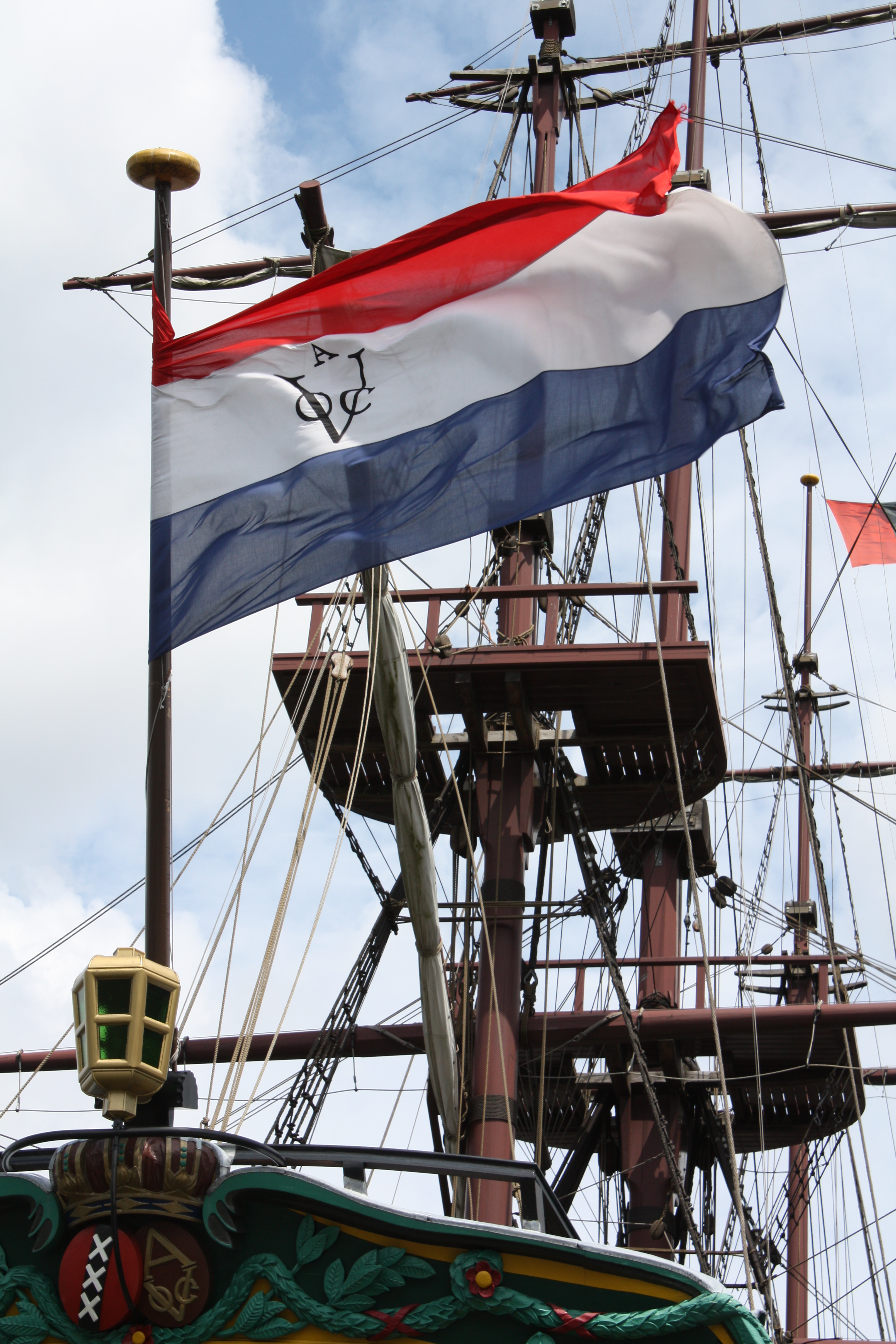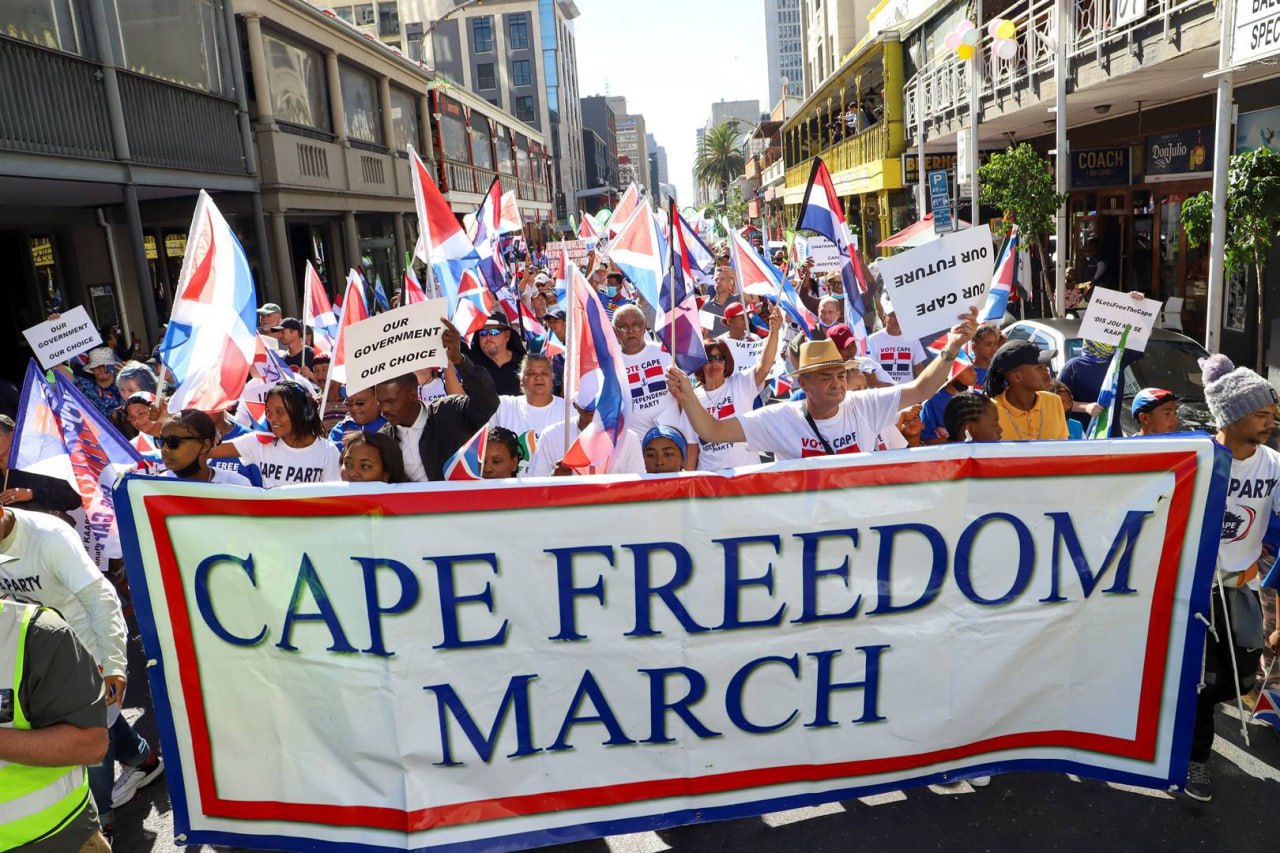|
Republic Of Swellendam
The Republic of Swellendam was founded in 1795 when dissatisfaction towards the Dutch East India Company caused the burghers of Swellendam to revolt, and on 17 June 1795 they declared themselves a republic. Hermanus Steyn was appointed as President of the Republic of Swellendam. The burghers of Swellendam started to call themselves "national burghers" – after the style of the French Revolution. However, the Republic was short-lived and was ended on 4 November 1795 when the Cape was occupied by the Kingdom of Great Britain. History The Republic of Swellendam came into existence when on 17 and 18 June 1795, around sixty Cape citizens under the leadership of Petrus Delport occupied the drostdy and forced the magistrate of Swellendam, Anthonie Faure and his officials to resign. Hermanus Steyn d'Jonge is elected as president. The incident took place a few months after Marthinus Prinsloo established an acting government in the Colony of Graaff-Reinet on 4 February 1795. The rebelli ... [...More Info...] [...Related Items...] OR: [Wikipedia] [Google] [Baidu] |
Swellendam
Swellendam () is the third oldest town in South Africa (after Cape Town and Stellenbosch), a town with 17,537 inhabitants situated in the Western Cape province. The town has over 50 provincial heritage sites, most of them buildings of Cape Dutch architecture. Swellendam is situated on the N2, approximately 220 km (140 miles) from both Cape Town and George. History Early travellers and explorers who visited the Cape in the 16th century traded with the Khoikhoi people who lived on these shores and in the interior. When the Dutch East India Company The United East India Company ( ; VOC ), commonly known as the Dutch East India Company, was a chartered company, chartered trading company and one of the first joint-stock companies in the world. Established on 20 March 1602 by the States Ge ... established a replenishment station at the Cape in 1652, trade continued inland as far as Swellendam. In 1743, Swellendam was declared a magisterial district, the third-old ... [...More Info...] [...Related Items...] OR: [Wikipedia] [Google] [Baidu] |
Dutch Cape Colony
The Cape of Good Hope () was a Dutch United East India Company (VOC) supplystation in Southern Africa, centered on the Cape of Good Hope, from where it derived its name. The original supply station and the successive states that the area was incorporated into occupied much of modern South Africa. Between 1652 and 1691, it was a Commandment, and between 1691 and 1795, a Governorate of the VOC. Jan van Riebeeck established the supply station as a re-supply and layover port for vessels of the VOC trading with Asia. The Cape came under VOC rule from 1652 to 1795 and from 1803 to 1806 as Dutch Cape Colony was ruled by the Batavian Republic. Much to the dismay of the shareholders of the VOC, who focused primarily on making profits from the Asian trade, the colony rapidly expanded into a settler colony in the years after its founding. As the only permanent settlement of the Dutch United East India Company serving as a trading post, it proved an ideal retirement place for employee ... [...More Info...] [...Related Items...] OR: [Wikipedia] [Google] [Baidu] |
1795 In South Africa
The following lists events that happened during the 1790s in South Africa. Events 1790 * More Xhosa clans started crossing the Great Fish Riverin search of better grazing 1791 * 29 June – Johan Isaac Rhenius is appointed acting Governor of the Cape Colony 1792 * A Dutch Reformed Church is founded in Graaff Reinet * A Moravian Mission is founded at Genadendal * 23 June – Sebastiaan Cornelis Nederburgh and Simon Hendrik Frijkenius, both Commissioner-Generals of the Dutch East India Company arrive in the Cape to settle disputes between the free citizens and the company. ** 3 July – Sebastiaan Nederburgh is appointed Commissioner-general of the Cape 1793 * Xhosas clash with the white settlers at the Fish River starting full out war, 2nd Cape Frontier War * War is declared by the victorious French revolutionaries against the Dutch Prince of Orange * Britain goes to war against France * 2 September – Abraham Josias Sluysken is appointed the Governor of the Cape. He is ... [...More Info...] [...Related Items...] OR: [Wikipedia] [Google] [Baidu] |
States And Territories Disestablished In 1795
State most commonly refers to: * State (polity), a centralized political organization that regulates law and society within a territory **Sovereign state, a sovereign polity in international law, commonly referred to as a country **Nation state, a state where the majority identify with a single nation (with shared culture or ethnic group) ** Constituent state, a political subdivision of a state ** Federated state, constituent states part of a federation *** U.S. state * State of nature, a concept within philosophy that describes the way humans acted before forming societies or civilizations State may also refer to: Arts, entertainment, and media Literature * '' State Magazine'', a monthly magazine published by the U.S. Department of State * ''The State'' (newspaper), a daily newspaper in Columbia, South Carolina, United States * '' Our State'', a monthly magazine published in North Carolina and formerly called ''The State'' * The State (Larry Niven), a fictional future governm ... [...More Info...] [...Related Items...] OR: [Wikipedia] [Google] [Baidu] |
Former Countries
A historical sovereign state is a Sovereign state, state that once existed, but has since been dissolved due to conflict, war, rebellion, annexation, or uprising. This page lists sovereign states, country, countries, nations, or empires that ceased to exist as political entities sometime after 1453, grouped geographically and by constitutional nature. Criteria for inclusion The criteria for inclusion in this list are similar to that of the list of states with limited recognition. To be included here, a polity must have claimed statehood and either: * had de facto control over a territory, a population, a government, a capacity to enter into relations with other states, or * have been recognised as a state by at least one other state. This is not a list for all variant governments of a state, nor is it a list of variations of countries' official long form name. For purposes of this list, the cutoff between medieval and early modern states is the fall of Constantinople in 1453. Anci ... [...More Info...] [...Related Items...] OR: [Wikipedia] [Google] [Baidu] |
Former Republics
A former is an object, such as a template, gauge or cutting die, which is used to form something such as a boat's hull. Typically, a former gives shape to a structure that may have complex curvature. A former may become an integral part of the finished structure, as in an aircraft fuselage, or it may be removable, being used in the construction process and then discarded or re-used. Aircraft formers Formers are used in the construction of aircraft fuselage, of which a typical fuselage has a series from the nose cone to the empennage, typically perpendicular to the longitudinal axis of the aircraft. The primary purpose of formers is to establish the shape of the fuselage and reduce the column length of stringers to prevent instability. Formers are typically attached to longerons, which support the skin of the aircraft. The "former-and-longeron" technique (also called stations and stringers) was adopted from boat construction, and was typical of light aircraft built until ... [...More Info...] [...Related Items...] OR: [Wikipedia] [Google] [Baidu] |
Cape Republic
Cape independence (Afrikaans: ''Kaapse onafhanklikheid''; isiXhosa: ''inkululeko yaseKapa''), also known by the portmanteau CapeXit, is a secessionist political movement that seeks the independence of the Western Cape province (alongside Afrikaans-speaking portions of the Eastern and Northern Cape provinces in some proposals) from South Africa. Context Demographic context Language The Western Cape province is the most racially diverse province in South Africa, being the single province with no majority racial group. Just under half of Western Cape inhabitants speak Afrikaans as a first language, with sizeable minorities speaking isiXhosa and English as their first languages. Ethnic Groups A plurality of the Cape's people are 'Cape Coloured', a diverse ethnicity with varying ancestry of indigenous Khoisan, other African, European and Asian people. Historically they have been the majority ethnic group in the Cape. Other notable minority ethnic groups include the Cape ... [...More Info...] [...Related Items...] OR: [Wikipedia] [Google] [Baidu] |
Netherlands
, Terminology of the Low Countries, informally Holland, is a country in Northwestern Europe, with Caribbean Netherlands, overseas territories in the Caribbean. It is the largest of the four constituent countries of the Kingdom of the Netherlands. The Netherlands consists of Provinces of the Netherlands, twelve provinces; it borders Germany to the east and Belgium to the south, with a North Sea coastline to the north and west. It shares Maritime boundary, maritime borders with the United Kingdom, Germany, and Belgium. The official language is Dutch language, Dutch, with West Frisian language, West Frisian as a secondary official language in the province of Friesland. Dutch, English_language, English, and Papiamento are official in the Caribbean Netherlands, Caribbean territories. The people who are from the Netherlands is often referred to as Dutch people, Dutch Ethnicity, Ethnicity group, not to be confused by the language. ''Netherlands'' literally means "lower countries" i ... [...More Info...] [...Related Items...] OR: [Wikipedia] [Google] [Baidu] |


